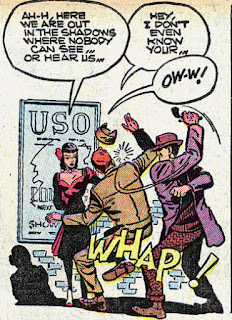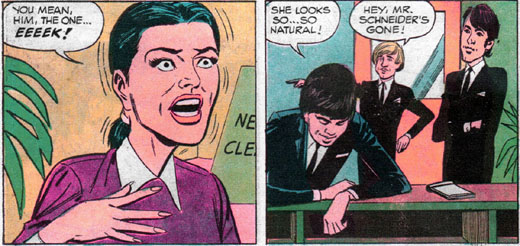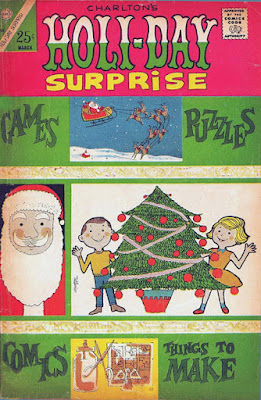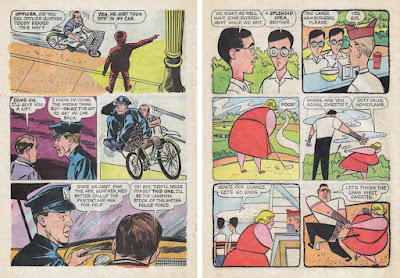After running as an anthology adventure book, Timely's Young Men took to presenting series—four of them: Flash Foster, a hot-rod racer; Rocky Steele, a boxer; Rex Lane, an occult detective; and Buzz Brand, a soldier in basic training. After three issues, publisher Martin Goodman and editor Stan Lee decided they liked the series idea fine, but tweaked it in late 1953 by replacing these characters with the Human Torch, Sub-Mariner, and Captain America, all last seen in 1949.
The first writer on the revived Human Torch was Hank Chapman, and by the end of the revival, the character's major artist was Dick Ayers. They had already worked on a series in Young Men: Buzz Brand.
Of the four short-lived series blurbed on the splash pages as "Young Men in Action," Buzz Brand is the one where I find Chapman's trademarks like "Ow-w," "Holy smokes," and "Cripes."
The GCD says that stories signed "Ayers" as opposed to "Dick Ayers" at this time (as are the first two here; the third is unsigned) are inked by Ernie Bache.
The two story titles come from the covers.
Buzz Brand in the United States Army, in Young Men
Writer: Hank Chapman; Penciller: Dick Ayers,; Inker: Ernie Bache
| June/53 | #21 | Under Fire | |
| Aug/ | #22 | (untitled) | |
| Oct/ | #23 | Stopped Dead |















